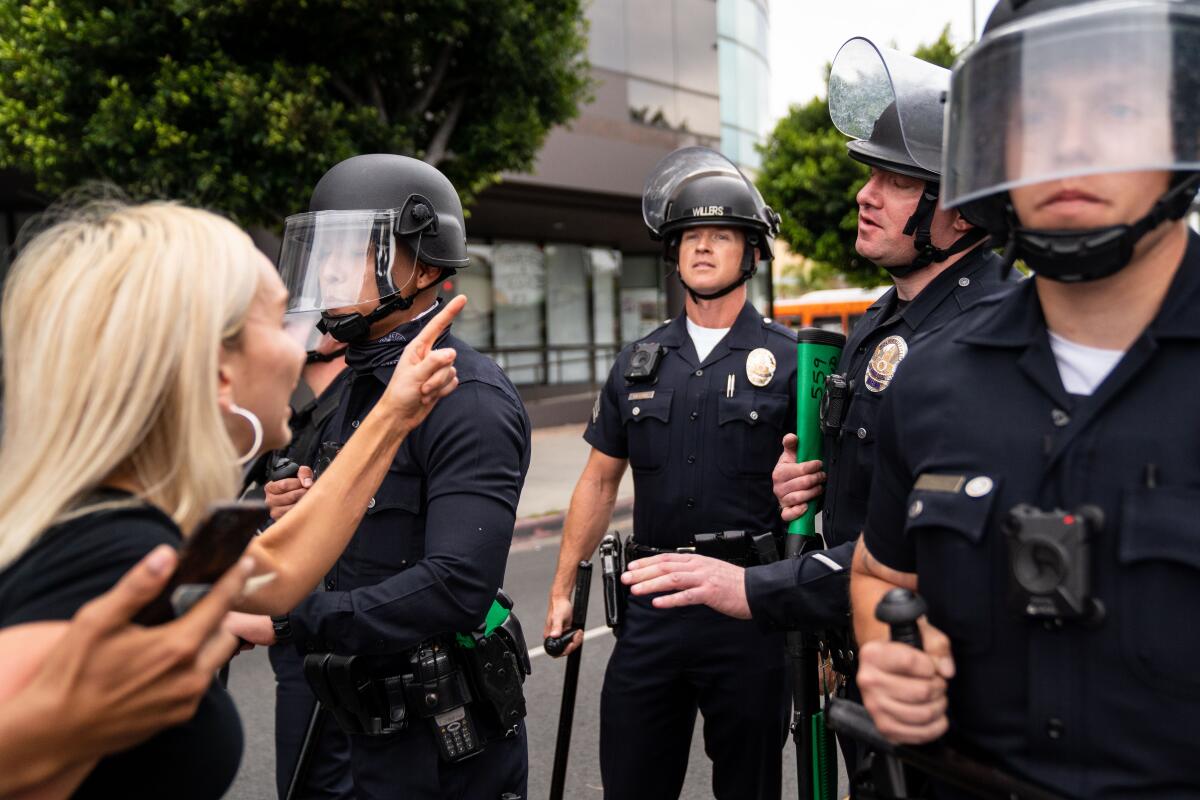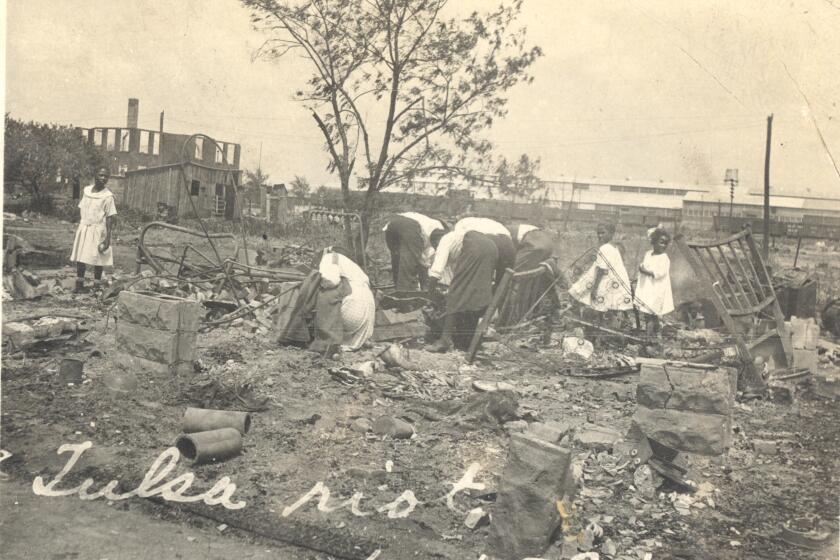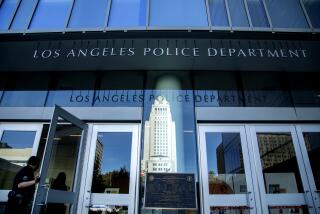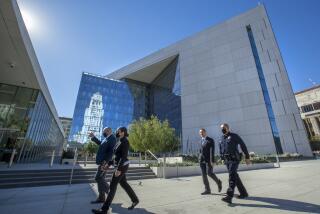Editorial: The more LAPD changes...

The modern era of policing in Los Angeles began with the notorious 1991 beating of Rodney King. Captured on video by a bystander, the beating went “viral” by pre-smartphone standards and forced the city’s white majority to finally confront the realities faced by Black L.A. residents in their encounters with police. The outrage helped launch two separate campaigns to reform the Los Angeles Police Department and other police agencies, which practically speaking had been accountable to no one but themselves.
Locally, a committee of civic leaders led by prominent L.A. attorney Warren Christopher issued a blueprint for a better LAPD that focused on civilian oversight and limits on the chief’s powers. Congress, meanwhile, conducted hearings on police brutality.
But crime rates were peaking in the early 1990s, and there was little appetite for undermining police powers, which instead increased under the notorious 1994 federal crime bill. The law allocated funding for 100,000 new police officers and tens of thousands of new prison cells nationwide. LAPD Chief Daryl F. Gates and L.A. County Sheriff Sherman Block responded to their new federal resources by accelerating crackdowns on gangs and illegal drugs.
As a nod to Congress’ police brutality hearings of a few years earlier, though, the bill included a short provision that granted the attorney general explicit authority to sue local law enforcement agencies over civil rights violations, and by implication to enter consent decrees that included judicial oversight to ensure that court-ordered reforms were carried out.
The newly empowered Justice Department first took on Pittsburgh but soon set its sights on Los Angeles, investigating the LAPD for patterns and practices of abuse based on racial discrimination. By the time the city submitted to a federal consent decree in 2001, the focus had shifted to the Rampart corruption scandal, in which police officers in an anti-gang unit planted false evidence, stole narcotics and, in one case, unjustly shot and paralyzed an unarmed man and planted a gun on him to make the shooting appear justified.
The Times Editorial Board examines the reckoning of the last year and considers what it means for policing and protest in Los Angeles and elsewhere.
Federal monitors oversaw changes in procedure, training and oversight. One unanticipated side effect was that hundreds of LAPD officers left rather than adapt to the new era of policing. The vast majority were white, and they were replaced by new recruits who better reflected the demographics of the city — a fact that, it was widely hoped, would alter abusive police behavior and make for better police-community relations.
At several of last summer’s protests after the killing of George Floyd, it was widely noted that the LAPD officers were far more racially and ethnically diverse than the mostly white and Black protesters who confronted them.
The LAPD is now the most reformed, and perhaps the most reform-minded, large police department in the nation.
Yet it remains one of the most problematic. It took a series of Los Angeles Times stories, for example, flagging racial bias in police vehicle stops for the LAPD to modify the practice. Separately, officers have been charged with falsifying records to enter the names of non-gang members into a gang database. As they have in other cities, videos taken by civilians in L.A. have captured and publicized instances of unwarranted police abuse.
At the L.A. County Sheriff’s Department, a series of reports by the ACLU and stories in the news media documented severe physical and mental abuse of jailed people by deputies in the early 2000s. After a commission called out department failures in 2012, Sheriff Lee Baca stepped down, and he and other personnel were convicted and imprisoned for obstruction of justice. Concurrently, questions persisted about the role of deputy “cliques” or gangs that were accused of calling the shots at sheriff’s stations and encouraging violence against suspects or even innocent victims.
Voters elected a new sheriff with a reform agenda — and then voted him out four years later and replaced him with Alex Villanueva, a lieutenant in the department who ran on promises of better community relations, less cooperation with immigration control officials and better treatment of communities long abused by law enforcement. In office, though, Villanueva focused instead on undoing his predecessor’s reforms and bucking new systems of accountability.
Voters also rolled back tougher discipline for LAPD officers accused of serious misconduct by approving a 2017 ballot measure backed by the police union.
Better, more responsible policing comes in fits and starts and is pockmarked by rollbacks, often triggered by crime panics and by police union opposition to reforms that members worry could subject them to unwanted scrutiny or discipline.
Each reform — each set of Christopher Commission recommendations, each federal consent decree, each improvement in training and oversight — is in its own way like the conviction of a bad police officer such as Derek Chauvin, whose killing of Floyd a year ago in Minneapolis set off the current and continuing focus on American policing. It leaves us, for a time, with a belief that justice was vindicated and the problem was solved.
Prosecutions are important, but we will not prosecute our way out of bad policing any more than we can prosecute our way out of crime waves. It is not the police who created the conditions that lead to crime. They are not the ones who defunded mental health services and then asked for power to arrest the mentally ill, nor are they the ones behind the housing, health, education and investment policies that have shaped our communities.
The rest of us created a defunded, unequal society and asked police to protect us from it. When we are confronted with video evidence of police practices, whether it be the beating of Rodney King, the murder of George Floyd or any of the other abuses and killings, we can be outraged. But we shouldn’t be surprised, nor should we expect police reforms, by themselves, to solve the underlying problems we created.
This editorial is the fifth in a series.
More to Read
A cure for the common opinion
Get thought-provoking perspectives with our weekly newsletter.
You may occasionally receive promotional content from the Los Angeles Times.











